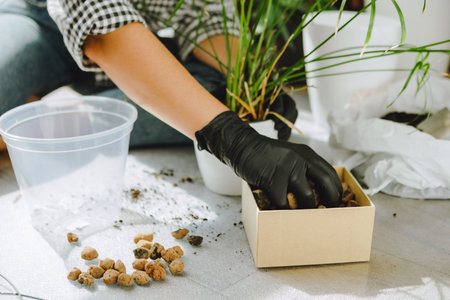Introduction to Integrated Pest Management (IPM)
Integrated Pest Management, or IPM, is a smart and sustainable approach to dealing with pests in your home garden. Instead of relying only on chemical sprays, IPM uses a combination of methods to prevent and manage pests in ways that are safe for people, pets, and the environment. This section introduces the key principles of IPM and explains how you can apply them in your own backyard.
What Is IPM?
IPM stands for Integrated Pest Management. Its a science-based strategy that focuses on long-term prevention and control of pests through a mix of techniques like proper planting, monitoring pest activity, and using targeted treatments when needed. The main goal is to manage pests in the most effective yet environmentally friendly way possible.
The Core Principles of IPM
| Principle | Description |
|---|---|
| Prevention | Start with healthy soil, choose pest-resistant plants, and practice good garden hygiene to stop problems before they start. |
| Monitoring | Keep an eye on your garden regularly to spot signs of pests early. Use tools like sticky traps or visual checks. |
| Identification | Make sure you know exactly what pest youre dealing with. Correct identification helps you choose the right solution. |
| Thresholds | Not all bugs are bad! Decide how much pest activity is acceptable before taking action. |
| Intervention | If needed, use the least harmful method first—like hand-picking pests or applying natural treatments—before turning to chemicals. |
Why IPM Works Well for Home Gardeners
Home gardens are often small and closely managed spaces, making them perfect for an IPM approach. With regular attention and care, gardeners can catch issues early and take action without needing harsh pesticides. Plus, IPM supports beneficial insects like ladybugs and bees, which help keep your garden thriving naturally.
Benefits of Using IPM at Home:
- Reduces reliance on chemical pesticides
- Keeps your garden eco-friendly
- Protects pollinators and other helpful insects
- Saves money over time by preventing major infestations
- Makes gardening more rewarding and educational
Getting Started with IPM Education
This series will guide you through practical resources, workshops, and online learning tools designed specifically for home gardeners interested in using IPM techniques. Whether youre new to gardening or looking to improve your pest management skills, youll find useful tips and trusted advice throughout the upcoming sections.
2. Understanding Common Garden Pests in the U.S.
One of the key steps in Integrated Pest Management (IPM) is learning how to identify and manage common garden pests in your area. Different regions across the U.S. have unique climates, plants, and pest pressures, so it’s important for home gardeners to become familiar with the pests specific to their location. Through IPM education, gardeners learn not only how to recognize these insects or diseases but also how to monitor them and respond using environmentally responsible strategies.
Why Pest Identification Matters
Correctly identifying a pest is crucial before taking any action. Misidentification can lead to unnecessary or harmful pesticide use, which may not even solve the problem. Education programs and online resources help gardeners distinguish between harmful pests, beneficial insects, and plant issues caused by non-pest factors like nutrient deficiencies or overwatering.
Monitoring Your Garden
Monitoring involves regularly inspecting your garden for signs of pest activity. This includes looking at leaves (top and bottom), stems, flowers, and soil surface. Tools like hand lenses, sticky traps, or even smartphone apps can make this task easier and more accurate. Keeping a garden journal helps track patterns over time.
Common Residential Garden Pests by Region
The table below provides examples of typical garden pests found in different U.S. regions along with tips for eco-friendly management:
| Region | Common Pests | Environmentally Friendly Control Methods |
|---|---|---|
| Northeast | Aphids, Japanese beetles, Slugs | Use neem oil for aphids, handpick beetles early morning, set beer traps for slugs |
| Southeast | Whiteflies, Fire ants, Tomato hornworms | Introduce ladybugs for whiteflies, apply boiling water directly on ant hills (with caution), handpick hornworms and attract birds |
| Midwest | Cabbage loopers, Cutworms, Squash bugs | Use row covers for seedlings, place collars around stems, rotate crops each year |
| Southwest | Spider mites, Leaf miners, Grasshoppers | Spray water on mite-infested plants daily, remove mined leaves, use floating row covers early in season for grasshoppers |
| West Coast | Pear slugs (sawfly larvae), Snails, Mealybugs | Rinse pear slugs off with water spray, use copper tape barriers for snails, dab mealybugs with rubbing alcohol-soaked cotton swab |
Educational Resources to Support Pest Management
There are many resources available to help home gardeners improve their pest management skills:
- County Extension Offices: Offer local workshops and fact sheets tailored to regional pests.
- University IPM Programs: Many land-grant universities provide free online databases with pest identification guides and eco-friendly treatment options.
- Online Learning Platforms: Sites like eXtension.org or local Master Gardener programs offer webinars and courses on monitoring techniques and sustainable gardening.
- Pest Identification Apps: Mobile tools like iNaturalist or PictureThis can assist in identifying unknown bugs quickly in the field.
The Importance of Environmentally Responsible Practices
An essential part of IPM is reducing harm to beneficial insects such as bees, ladybugs, and butterflies while targeting harmful pests. Choosing non-chemical solutions whenever possible protects pollinators and maintains a healthy garden ecosystem. Simple actions like planting native species that support natural predators or using mulch to deter weeds can go a long way in preventing pest outbreaks without resorting to harsh chemicals.
Stay Informed Year-Round
Pest populations shift throughout the seasons. By staying educated through local workshops or subscribing to regional gardening newsletters, you can stay ahead of emerging threats and adjust your strategies as needed—all while keeping your garden safe for people, pets, and pollinators.

3. Hands-On Workshops and Community Programs
For home gardeners looking to dive deeper into Integrated Pest Management (IPM), in-person learning is a great way to gain practical knowledge and connect with local experts. Across the United States, there are several opportunities available through local organizations that offer workshops, training sessions, and community programs focused on sustainable gardening practices.
Local Cooperative Extension Services
Cooperative Extension offices, typically affiliated with land-grant universities, are excellent resources for IPM education. These offices often host seasonal workshops, pest identification clinics, and gardening seminars tailored to regional growing conditions. Many of these events are free or low-cost and open to the public.
What You Can Learn:
- Pest and disease identification specific to your region
- Safe and effective control methods using IPM principles
- How to create healthy soil and attract beneficial insects
Master Gardener Programs
The Master Gardener program is a volunteer-driven initiative that provides in-depth horticultural training. After completing their training, Master Gardeners often give back by leading community workshops, offering advice at local events, or maintaining demonstration gardens. This makes them a valuable source of information for home gardeners interested in IPM.
Benefits of Joining or Connecting with Master Gardeners:
- Access to expert-led classes and field days
- Peer learning with fellow gardening enthusiasts
- Volunteer opportunities in educational gardens and school programs
Community Garden IPM Workshops
Many cities have thriving community garden networks that offer hands-on IPM workshops during the growing season. These workshops usually take place right in the garden, allowing participants to learn about pest control strategies in a real-world setting. Topics might include companion planting, organic pest deterrents, or how to monitor for common pests.
Typical Workshop Topics:
| Topic | Description |
|---|---|
| Organic Pest Control | Using natural products and beneficial insects to manage pests. |
| Pest Scouting Techniques | How to regularly inspect plants and identify early signs of trouble. |
| Disease Prevention | Tips on spacing, watering, and crop rotation to avoid plant diseases. |
Whether youre a beginner or an experienced gardener, these local programs can help you apply IPM principles more effectively in your own backyard. By engaging with your community’s resources, you’ll not only grow healthier plants—you’ll also become part of a network committed to sustainable gardening.
4. Online Learning Tools and Resources
Integrated Pest Management (IPM) doesnt have to be complicated, especially with the wealth of digital resources now available for home gardeners. Whether youre just getting started or looking to deepen your knowledge, there are plenty of online tools that let you learn at your own pace—right from your backyard or kitchen table.
Webinars: Learn from the Experts
Many universities and extension programs across the U.S. offer free or low-cost webinars on IPM topics. These live or recorded sessions cover everything from identifying common garden pests to using organic pest control methods effectively.
Popular Webinar Hosts:
| Organization | Website | Topics Covered |
|---|---|---|
| University of California Agriculture and Natural Resources (UC ANR) | ipm.ucanr.edu | Pest ID, natural enemies, pesticide safety |
| eXtension.org | learn.extension.org | Sustainable gardening, soil health, IPM basics |
| Cornell Cooperative Extension | cals.cornell.edu | Home IPM strategies, invasive species management |
E-Learning Modules: Self-Paced Courses
If you prefer structured learning, several organizations offer interactive modules that walk you through the core principles of IPM. These e-learning courses often include quizzes, visuals, and real-life case studies to help reinforce what youve learned.
Top E-Learning Platforms:
- PestSmart: Offers beginner-friendly courses on pest prevention and eco-friendly controls.
- eXtension Campus: Features comprehensive IPM courses created by university experts.
- eCornell: Provides advanced modules for more experienced gardeners or Master Gardeners.
Videos: Watch and Learn
Short videos are perfect when you need quick tips or visual demonstrations. YouTube channels run by cooperative extensions, master gardener programs, and botanical gardens regularly post step-by-step videos that show how to scout for pests, apply non-toxic treatments, and keep your garden healthy year-round.
YouTube Channels Worth Following:
Downloadable Guides and Fact Sheets
If you like having something handy while youre out in the garden, downloadable PDFs are a great option. These guides often include pest ID charts, seasonal checklists, and treatment recommendations tailored to your region.
Recommended Downloads:
- National Pesticide Information Center (NPIC): Offers fact sheets on safe pesticide use and alternatives.
- University Extension Offices: Most state universities provide free regional guides for home gardeners.
- Sustainable Agriculture Research & Education (SARE): Downloadable manuals on ecological pest management practices.
No matter where you live or how much experience you have, these online resources make it easy to grow smarter with IPM. Take advantage of these flexible learning options to build a healthier garden—and a healthier environment.
5. Choosing the Right IPM Strategies for Your Garden
Integrated Pest Management (IPM) isnt a one-size-fits-all approach. The best strategies depend on your specific garden setting, the types of plants youre growing, and the local climate. In this section, we’ll explore practical ways to match the right IPM tools with your unique gardening situation—whether youre managing a backyard vegetable patch, a rose garden, or a xeriscape yard.
Understanding Your Garden’s Environment
Before selecting any pest management techniques, it’s important to understand the conditions in your garden. Consider the following:
- Location: Are you in a dry desert region or a humid coastal area?
- Plant Types: Are you growing native plants, ornamentals, vegetables, or fruit trees?
- Garden Layout: Is your garden shaded, sunny, raised bed, or container-based?
Common IPM Strategies by Garden Type
Here’s a quick guide to help you choose appropriate IPM methods based on different garden settings:
| Garden Type | Effective IPM Strategies | Common Pests |
|---|---|---|
| Vegetable Garden | Crop rotation, row covers, hand-picking pests, introducing beneficial insects | Aphids, caterpillars, beetles |
| Ornamental Flower Beds | Mulching, pruning infected areas, using pest-resistant varieties | Spider mites, thrips, snails |
| Xeriscape or Drought-Tolerant Landscapes | Selecting native plants, reducing overhead watering, monitoring soil health | Aphids, scale insects |
| Container Gardens | Regular inspection, clean pots/tools, using sterile potting mix | Fungus gnats, whiteflies |
Selecting Climate-Specific Solutions
Your regional climate plays a big role in which pests are active and when. Here’s how to align your strategy with your environment:
Mild Coastal Climates (e.g., parts of California)
- Use physical barriers like netting to protect crops year-round.
- Monitor for fungal diseases during foggy seasons.
Hot and Dry Climates (e.g., Southwest U.S.)
- Select drought-tolerant and pest-resistant plant varieties.
- Avoid overwatering to reduce root rot and attract fewer pests.
Northern Climates with Short Growing Seasons (e.g., Midwest/Northeast)
- Start seeds indoors to get ahead of pest cycles.
- Use floating row covers to protect young plants from early-season insects.
Learning Through Local Resources
The best way to tailor your IPM plan is by staying connected with local resources. Many universities and extension programs offer region-specific workshops and online courses tailored for home gardeners. These resources often include pest ID tools and seasonal advice that can help you make informed decisions throughout the year.
Helpful Tip:
If youre unsure what pests are affecting your garden or which method is best for control, take clear photos and reach out to your local Master Gardener program or Cooperative Extension office for guidance.
The more you observe and learn about your garden’s ecosystem, the better youll become at choosing IPM practices that work naturally with your environment while keeping pests in check.


